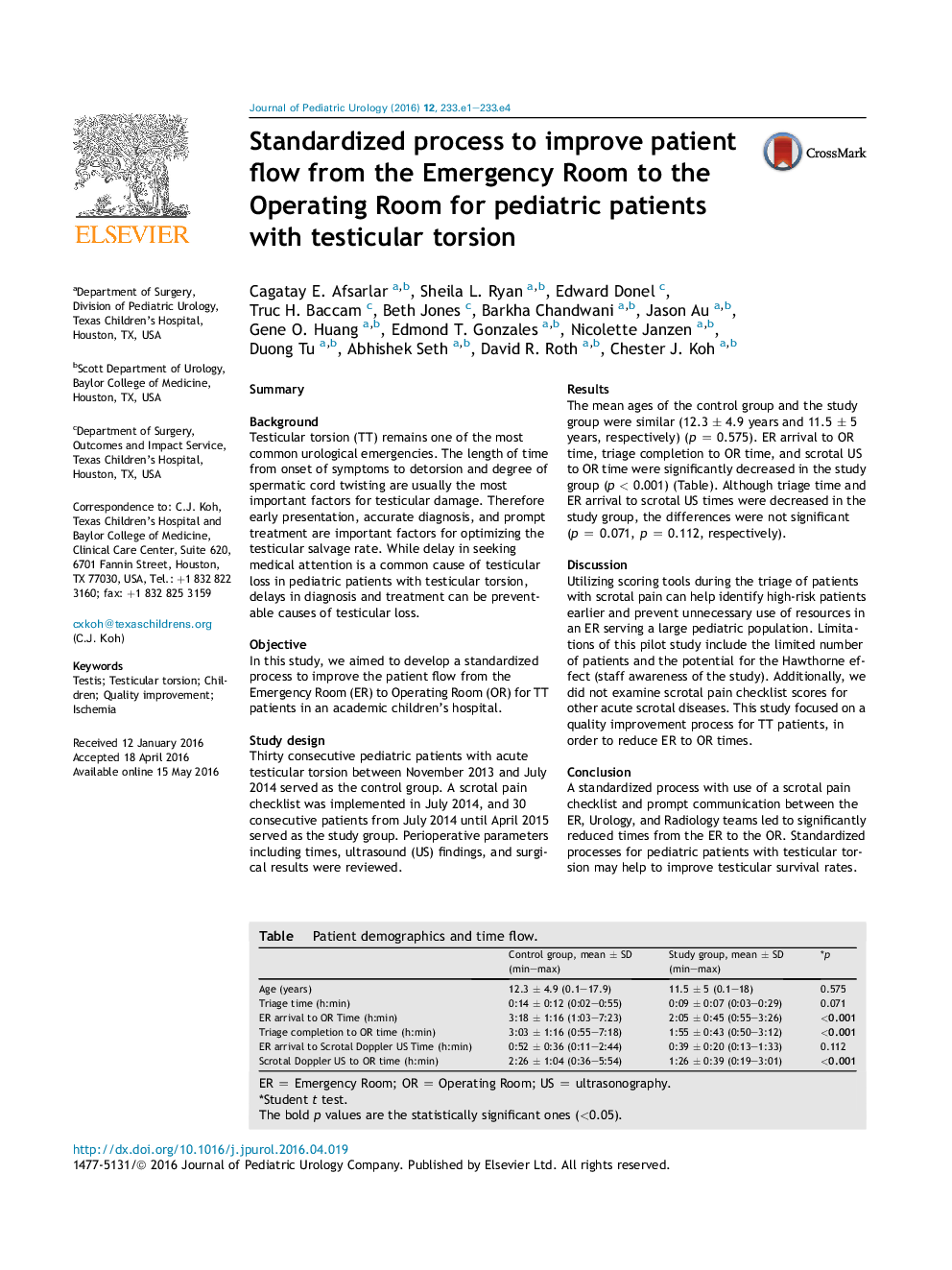| Article ID | Journal | Published Year | Pages | File Type |
|---|---|---|---|---|
| 4161843 | Journal of Pediatric Urology | 2016 | 4 Pages |
Abstract
A standardized process with use of a scrotal pain checklist and prompt communication between the ER, Urology, and Radiology teams led to significantly reduced times from the ER to the OR. Standardized processes for pediatric patients with testicular torsion may help to improve testicular survival rates.Table. Patient demographics and time flow.Control group, mean ± SD (min-max)Study group, mean ± SD (min-max)*pAge (years)12.3 ± 4.9 (0.1-17.9)11.5 ± 5 (0.1-18)0.575Triage time (h:min)0:14 ± 0:12 (0:02-0:55)0:09 ± 0:07 (0:03-0:29)0.071ER arrival to OR Time (h:min)3:18 ± 1:16 (1:03-7:23)2:05 ± 0:45 (0:55-3:26)<0.001Triage completion to OR time (h:min)3:03 ± 1:16 (0:55-7:18)1:55 ± 0:43 (0:50-3:12)<0.001ER arrival to Scrotal Doppler US Time (h:min)0:52 ± 0:36 (0:11-2:44)0:39 ± 0:20 (0:13-1:33)0.112Scrotal Doppler US to OR time (h:min)2:26 ± 1:04 (0:36-5:54)1:26 ± 0:39 (0:19-3:01)<0.001ER = Emergency Room; OR = Operating Room; US = ultrasonography.*Student t test.The bold p values are the statistically significant ones (<0.05).
Related Topics
Health Sciences
Medicine and Dentistry
Perinatology, Pediatrics and Child Health
Authors
Cagatay E. Afsarlar, Sheila L. Ryan, Edward Donel, Truc H. Baccam, Beth Jones, Barkha Chandwani, Jason Au, Gene O. Huang, Edmond T. Gonzales, Nicolette Janzen, Duong Tu, Abhishek Seth, David R. Roth, Chester J. Koh,
